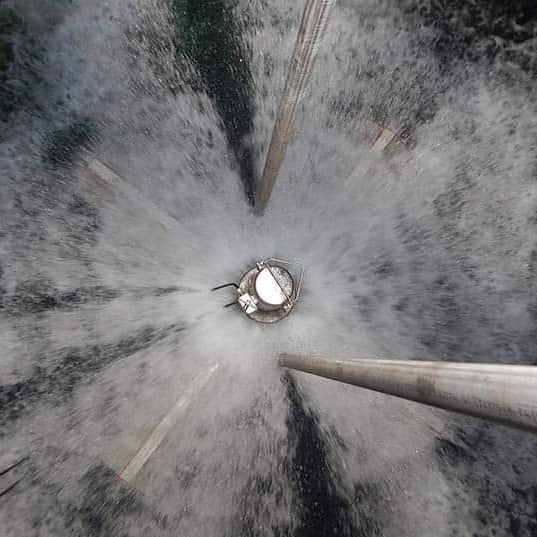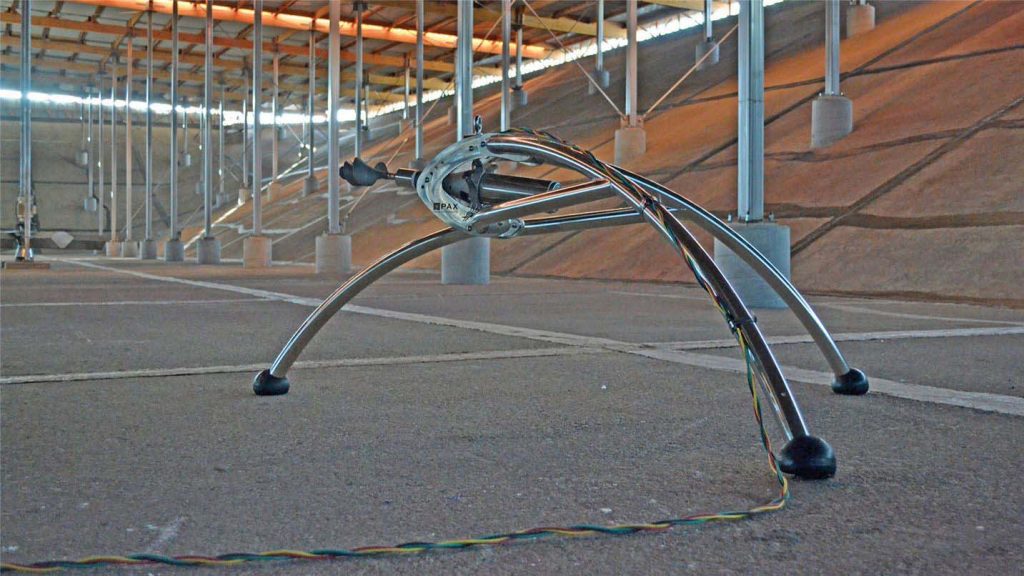Project Summary
Customer
San Jose Water, CA

Type of Project
Trihalomethane removal system
Results
- Improved water quality by removing 40% of THMs from a 12MG water reservoir in drought-stricken California.
San Jose Water, situated in the heart of Silicon Valley, California is used to being on the forefront of innovation. As one of the largest and most technologically sophisticated investor-owned utilities in the United States, San Jose Water has taken a proactive approach to improve drinking water quality and lower operating costs.
Over the last two decades, San Jose Water (like other water utilities in the western United States) has faced unprecedented challenges due to drought – reducing both the supply and quality of water sources. At the same time, water quality regulations have become more stringent, forcing San Jose Water to meet higher standards for finished water quality while utilizing increasingly challenging raw water supplies. San Jose Water carries out a thorough and sophisticated water quality monitoring program to protect public health. A few years ago, these programs alerted management to a significant new threat to drinking water quality: disinfection by-products (DBPs).
Drought has a direct effect on DBPs in two ways. First, lower-than-average water flows often result in higher concentrations of organic matter in raw water; organic matter reacts with chlorine to form disinfection by-products. Secondly, due to the geology of the area, bromide levels in raw water also increase. Bromide drives the formation of bromoform and other bromine-containing DBPs.
Santa Clara Valley Water District, the wholesale water supplier of San Jose Water, had several options to drive down organic levels in its water during treatment. One option was to increase the application of powdered activated carbon (PAC). PAC was used by Santa Clara historically only for taste and odor issues – not for lowering DBPs. It was not at all clear if Santa Clara would be able to use this approach to improve the water prior to its arrival in the San Jose Water system, or how much of an effect it would have. “PAC is not an economical solution to address TOC (Total Organic Carbon),” explains Adam Feffer, Manager of Water Quality at San Jose Water, “if it’s all you have in hand, it’s something, but it’s very expensive.”
“
As part of our Stage 2 DBP monitoring program, we evaluate DBP levels across the system. A few years ago, results showed a significant increase in DBP levels. Our wholesale supplier (Santa Clara Valley Water District) corroborated that water quality was deteriorating due to drought.
— Adam Feffer, Manager of Water Quality

The part of the San Jose Water system that caused the greatest concern was the western part of the system. Water from this part of the system is treated by Santa Clara Valley Water’s Rinconada Treatment Plant and then enters the San Jose system at the 12-MG More Ave. reservoir. Five DBP sample locations downstream of the More Ave. reservoir showed significant elevations in THM levels. While the water system remained in compliance, managers at San Jose Water wanted to eliminate the risk of a future operational exceedance in the summer – when THM levels were expected to be highest. And, with no guarantee that Santa Clara Valley’s application of PAC would be sufficient to eliminate the problem, San Jose Water had to act on their own, and act fast.
“I had recently attended a webinar on the subject of in-tank aeration as a means of reducing THM levels in finished drinking water,” recalls Feffer, “and it seemed like a promising approach to try.”
In-tank aeration utilizes conventional water aeration technology in a new way. Instead of transferring oxygen into water, aeration is used to strip THMs out of the water after they form. The advantage of this approach is that aeration can be applied in selective parts of a water distribution system – lowering THM levels where the need is greatest.
PAX Water began the design phase of the project immediately. The aeration system would consist of seven novel surface aerators, modified to improve their efficiency at removing THMs. The system would also use two PAX Water Mixers to efficiently deliver water into the process zone created by each aerator to maximize removal of THMs.
Finally, the system utilized a custom-designed airhandling unit (AHU) to exhaust THMs out of the headspace. “We did not get the green light to begin construction until April,” recalls USG Water Solutions project lead. “We faced a number of challenges including the placement of the AHU and the fact that residents lived right on the other side of the fence. Our system had to be energy-efficient, easy to maintain and quiet.”


During the installation phase of the project, water quality managers at San Jose realized that an additional resource that could help them manage their THMs was literally right next door. Aqua Metrology, in neighboring Sunnyvale, California, had developed an online THM analyzer that could rapidly and reliably measure THM levels at the More Ave. reservoir. The system uses a colorimetric method based on the Fujiwara reactions and a fully-automated sample collection and analysis system to provide THM data every four hours. The system was added to the project and housed in a custom enclosure next to the tank.
While San Jose Water was fully prepared to face a major increase in THM levels in the summer, it had lots of help. Santa Clara Valley Water aggressively pursued the use of PAC to lower TOC, and it also made some changes to system operations to reduce residence time in the treatment process – all in an effort to reduce DBPs and give its retailers more time to address DBPs in their systems. “We are very happy so far,” reports Feffer. “We are seeing excellent results from the system, and noise has not been a problem. It’s impressive how fast this project went.”
